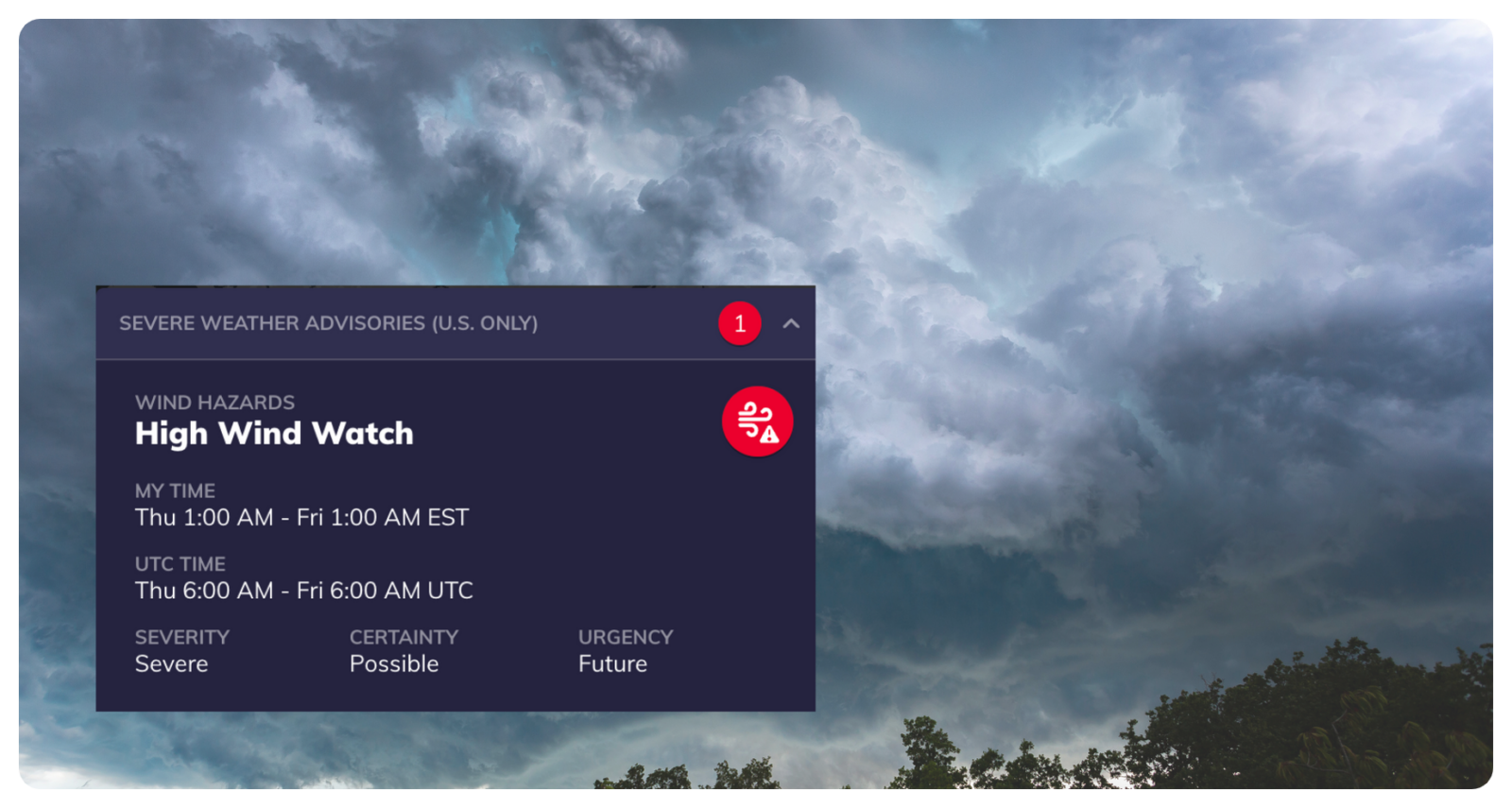When was the last time you heard about a weather watch or warning in your area? For most of us, it’s an increasingly frequent occurrence. In fact, NOAA’s Storm Prediction Center issues approximately 1000 watches alone each year.
But for many business owners, these alerts prompt little action beyond ensuring that employees are made aware. That’s because watches and warnings are often misunderstood and, more importantly, lack the advanced lead time businesses and individuals need to take appropriate action.
Here’s what your business needs to know about these distinct alerts and how you can better prepare in the future:
The Difference Between Watches and Warnings
Watches and warnings exist for every weather event– tornadoes, hurricanes, flash floods, tropical storms, winter storms, blizzards, ice, heat, wind chill, freeze, fire, fog, high wind, extreme wind, coastal flood, river floods, etc.
It’s important to note that the precautionary/preparedness actions and specifics depend on the weather event responsible for the watch or warning. But there are general differentiators that hold true regardless of the event type. Having this foundational knowledge is needed before applying these terms to specific weather events.
The first question many businesses ask after hearing about a watch or warning is often “Which is worse?” The answer? Both are significant. But there’s a key difference: timing.
So let’s get into it: Watches come first. Warnings come second. You need to be aware of the watch in order to prepare for the warning. As a result, it is arguably more important for a business to be prepared for a watch so their team can take action if a warning is issued.
What does not change is the importance of businesses understanding what a watch and warning means to their operations in order to mitigate risk.
Watches
What They Are
Watches mean you need to be on the lookout. In these scenarios, there is a risk of weather hazards in the near future, which could pose a threat to life/property. During a watch, conditions are favorable for severe weather, but it’s important to note that a watch does not mean the severe weather that it is necessarily occurring yet. Also, not all watches produce warnings.
How to Act
When a watch is issued, it’s important to have a plan of action ready. Your team should be extra aware and ready to act on the pre-established plan when a warning is issued. This is your business’s time to prepare, which may include moving to a designated area of your building, securing outdoor equipment, alerting customers, etc. It’s also important to note that watches are typically issued for large areas (for example, counties) and are in effect for several hours.
Warnings
What They Are
Warnings mean you need to act now, as a weather hazard is occurring, imminent, or likely. In other words, severe weather is happening now, developing as we speak, and is minutes away. This weather hazard poses a threat to life and property.
How to Act
When a warning is issued, businesses must take protective action immediately. Warnings cover a smaller area, demonstrating how all disasters are local. And while watches are spread out over time, warnings are quick.
Mitigating Situational Vulnerability Through Weather Intelligence
Watches and warnings are critical tools for individuals to take action and seek immediate protection. But these short-term alerts still expose businesses to the risk of “situational vulnerability.”
After the deadly December 2021 quad-state tornadoes, Kim Klockow-McClain, a meteorologist and social science researcher at the University of Oklahoma and the National Severe Storms Laboratory, highlighted the concept of “situational vulnerability” with the Washington Post. Dr. Klockow-McClain explained that watches and warnings, which were employed during this disaster are used “to reach individuals who have control of their settings. These warnings are designed for people at home.When people go to work or a business, it’s a situational vulnerability—the situation you find yourself in when a tornado occurs.”
How Weather Intelligence Can Help Before Watches or Warnings Are Issued
This concept of situation vulnerability spotlights the importance of businesses preparing for watches and warnings in order to protect their employees and customers. But without enough advanced notice, companies are powerless to proactive protection.
The National Weather Service’s watches and warnings relay impending or immediate danger—
Right now, the average lead time for a tornado is only between eight and 18 minutes. That’s where a hyperlocal weather intelligence platform, like Tomorrow.io’s platform, can help. With automated alerts set up days in advance, Tomorrow.io empowers businesses to get ahead of situational vulnerability and make decisions before it’s too late.
Regardless of whether a watch or warning is issues, businesses can reduce confusion and make more confident operational decisions by:
- Monitor 30+ weather parameters for days in advance
- Predict how incoming weather will impact your business
- Automate industry-specific alerts to act before a watch or warning is issued
No matter your industry, extreme weather events present a serious threat to your business.
Ready to make more informed decisions in advance? Take our free climate risk assessment now.















